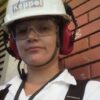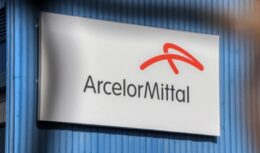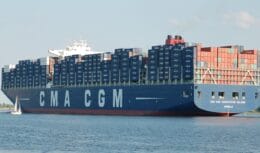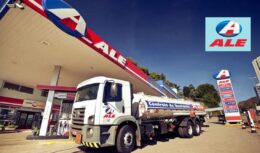
Monai exploratory well, in the pre-salt of the Espírito Santo Basin, reaches a depth of 7.700 meters and breaks several operational records
The Brazilian oil giant Petrobras, informed in a relevant fact to the market, last Friday (10/12), that it concluded the drilling of the pioneer oil exploratory well in block ES-M-669, in the pre-salt of the Basin of Holy Spirit. Drilled 145 km from the coast, in a location known as Monai, a mythological figure of the Guarani culture, the project broke several records, including the deepest well ever drilled in Brazil, at around 7.700 meters; and the largest salt layer ever drilled in the country, with approximately 4.850 m.
Read also
- OPEC lifts crude oil output by 500.000 barrels a day in November amid Omicron uncertainty
- Constellation wins a millionaire contract from Petrobras to charter the drillship Amaralina Star for a project that will involve the drilling of 27 new oil wells
- Petrobras invested around BRL 2 billion this year in preventive maintenance, inspecting more than 4000 refinery equipment and maintaining a high level of fuel production
- The most expensive average price of ethanol and gasoline was found at gas stations in Rio de Janeiro, with an increase of more than 10% for biofuel
“The intensive use of technology and the efficient performance of the teams involved also allowed us to reduce the well drilling time by approximately 50%, compared to the historical average for projects of this nature and complexity, which also represents a significant cost reduction. . The exploration of this new frontier in the pre-salt of the Espírito Santo Basin reaffirms Petrobras' focus on operating in ultra-deep waters through partnerships with other companies”, highlighted Production Development director João Henrique Rittershaussen.
Unlike an oil producing well, an exploratory well aims to obtain information about the characteristics of the rocks drilled, their geology, existing pressures and the presence of reservoirs with oil or gas. The drilling of the pioneer well Monai obtained all the expected geological information for a proper assessment of the area. The data obtained are being analyzed to define the future of the ES-M-669 block. It should be noted that the geological information obtained in exploratory frontier areas, as is the case of Monai, also subsidize the improvement of studies and modeling for other areas and basins, incorporating important strategic knowledge for the company.
Monai Well was drilled to a record depth of 7.700 meters, equivalent to 1,3 times the height of Mount Kilimanjaro, the highest mountain in Africa.
Located on a new exploratory frontier, the drilling of the Monai well was characterized by a scenario with significant technical challenges and a high level of operational complexity. The well was drilled in a location with a water depth (distance between the surface of the water and the bottom of the sea) of 2.366 meters. The total record well depth of 7.700 meters, for comparison purposes, is equivalent to 1,3 times the height of Mount Kilimanjaro, the highest mountain in Africa. The previous depth record was held by the well known as Parati, one of the forerunners of the pre-salt discovery, drilled in 2005, in the Santos Basin, with 7.630 meters.
Another important record obtained by the Monai well was the thickest layer of salt ever drilled, with 4.850 meters, equivalent to the height of almost six Burj Khalifa, the tallest skyscraper in the world. The usual thickness of the salt layer in oil wells in the Santos Basin pre-salt, the largest pre-salt oil hub on the planet, is around 2.000 to 2.200 meters.

Poço Monai had the heaviest weight of casing ever dropped in Brazilian waters, 794 tons, the equivalent of five blue whales, the heaviest animal on the planet.
The Monai well also broke other drilling records in Brazil. This is the longest single-phase (segment) well in a vertical/directional well in the country, with approximately 3.400 meters. In addition, the well also broke the record for the largest tie-back column, a type of steel pipe that connects a section of pipe at the bottom of the well to the “head” of the well, installed at the bottom of the sea. The tie-back column in the Monai well has a total length of 4.300 meters. Finally, the Monai well had the heaviest casing weight ever dropped in Brazilian waters, 794 tons, the equivalent of five blue whales, the heaviest animal on the planet. The casing is a steel column that lines the walls of the well to maintain its stability and integrity, preventing rocks from collapsing into the well and also acting as an important barrier to protect against fluid leaks to the external environment.
The great depths reached imposed a series of challenges for Petrobras. In general, the deeper the drilling, the more compact and dense the existing rocks. For comparison, the drilling speed close to the seabed reaches around 100 meters per hour. In very deep horizons, as in the final stages of Monai, the drilling speed drops to less than 5 meters per hour. The pressure at great depths, such as those reached by the Monai well, also presents a great challenge for the safe drilling of the well. In such deep geological horizons, the pressure reaches values around 17.000 psi, equivalent to approximately 1200 times the pressure existing in the Earth's atmosphere at sea level or 500 times the air pressure in a passenger car tire.
Drilling at these severity levels has required constant technological evolution by Petrobras. State-of-the-art technologies were used in the project, such as drilling rigs with a high technical specification, state-of-the-art drill bits, advanced drilling systems such as Managed Pressure Drilling (MPD), which consists of managing pressures in the well in real time, by through the use of sensors, increasing the efficiency and mainly the safety of the operation. The project also had 24×7 on-board and remote operational surveillance systems, making a decisive contribution to operational efficiency and safety. In addition, both in the planning and in the execution of wells, Petrobras has made intense use of lessons learned, new technologies, automation and digital solutions to ensure that operations are carried out with excellence and generate significant value for its projects.
A milestone in the oil exploration industry in Brazil, the Monai well drilling project reflects Petrobras' focus on safety, efficiency, technology and value creation
Block ES-M-669 was acquired in 2013, in the 11th Concession Round of the National Agency of Petroleum, Natural Gas and Biofuels (ANP). Petrobras is the operator in the block with a 40% stake, while Equinor and Total, who complete the formation of the consortium, have 35% and 25% respectively. Since the acquisition of the block, significant resources have already been invested in seismic surveys, in the drilling of the pioneer exploratory well and in other activities. These investments, which are still taking place in a phase of uncertainty about the viability of production, show the usual economic risk to which the entire oil industry is subjected. To this capital already used in exploration, other considerable expenses will be added in the production and refining of petroleum, and in the transport and commercialization of derivatives, so that fuels, such as gasoline and diesel, reach the final consumer.
A milestone in the oil exploration industry in Brazil, the Monai well drilling project reflects Petrobras' focus on safety, efficiency, technology and value creation. Following these principles, the company will be increasingly stronger and able to contribute to the prosperity of society.













Air Force F-16 fighters…
True friend, what they shot down were…
Air Force F-16 fighters…
I would like to know what planet you live on…
Air Force F-16 fighters…
Everything is fine, 100-year secrecy,…
Air Force F-16 fighters…
Well... It's flying scrap... Typical...
Air Force F-16 fighters…
Which genocide are you talking about? Than…
How do you write?
He's upset because the army doesn't...
How will he stay on the air?…
This is fake, it can only be
The investment is 50 billion. There…
I'm from the commerce area, but I have…
Or 35.000/ not counting the DPVAT in…
When there were no hard roads, I...